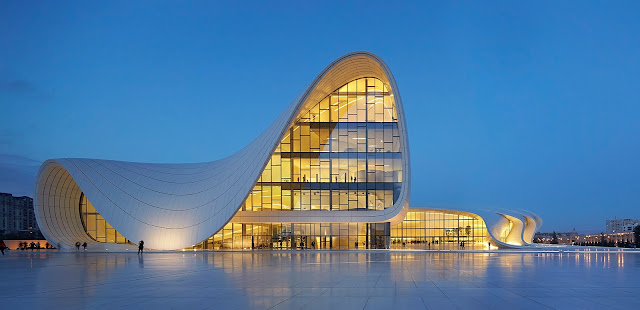Oggi non posso fare a meno di rivolgere un pensiero a Zaha Hadid.
Voglio ricordarla con le immagini di una delle opere più belle ed innovative tra quelle progettate dall'architetto anglo-irachena: l'Heydar Aliyev Center (centro congressi-museo e biblioteca) realizzato a Baku capitale dell'Azerbaijan.
Zaha Adid ha vinto un concorso bandito per il centro civico della città, con il suo progetto di un'architettura fluida, dove la superficie sinuosa, che richiama la calligrafia araba, avvolge letteralmente lo spazio, realizzando una relazione continua tra esterno ed interno.
L'edificio appare sempre nuovo dalle diverse angolazioni da cui lo si osservi ed assume un aspetto molto diverso la notte quando la luce si accende dall'interno e filtra tra le onde in maniera suggestiva.
Opera d'arte ed icona dell'architettura contemporanea.
A thought for Zaha Hadid
Today I can not help but spare a thought for Zaha Hadid.
I want to remember her with images of one of the most beautiful and innovative works, including those designed by Anglo-Iraqi architect: the Heydar Aliyev Center (convention center-museum and library) created in Azerbaijan's capital Baku.
Zaha Hadid won a competition for the civic center of the city, with her project of fluid architecture, where the sinuous surface that recalls the Arabic calligraphy, literally envelops the space, creating a continuous relationship between exterior and interior.
The building always appears again from different angles from which it is observed and takes on a very different aspect at night when the light goes on inside and filters through the waves in a suggestive manner.
Artwork and icon of contemporary architecture.


















































